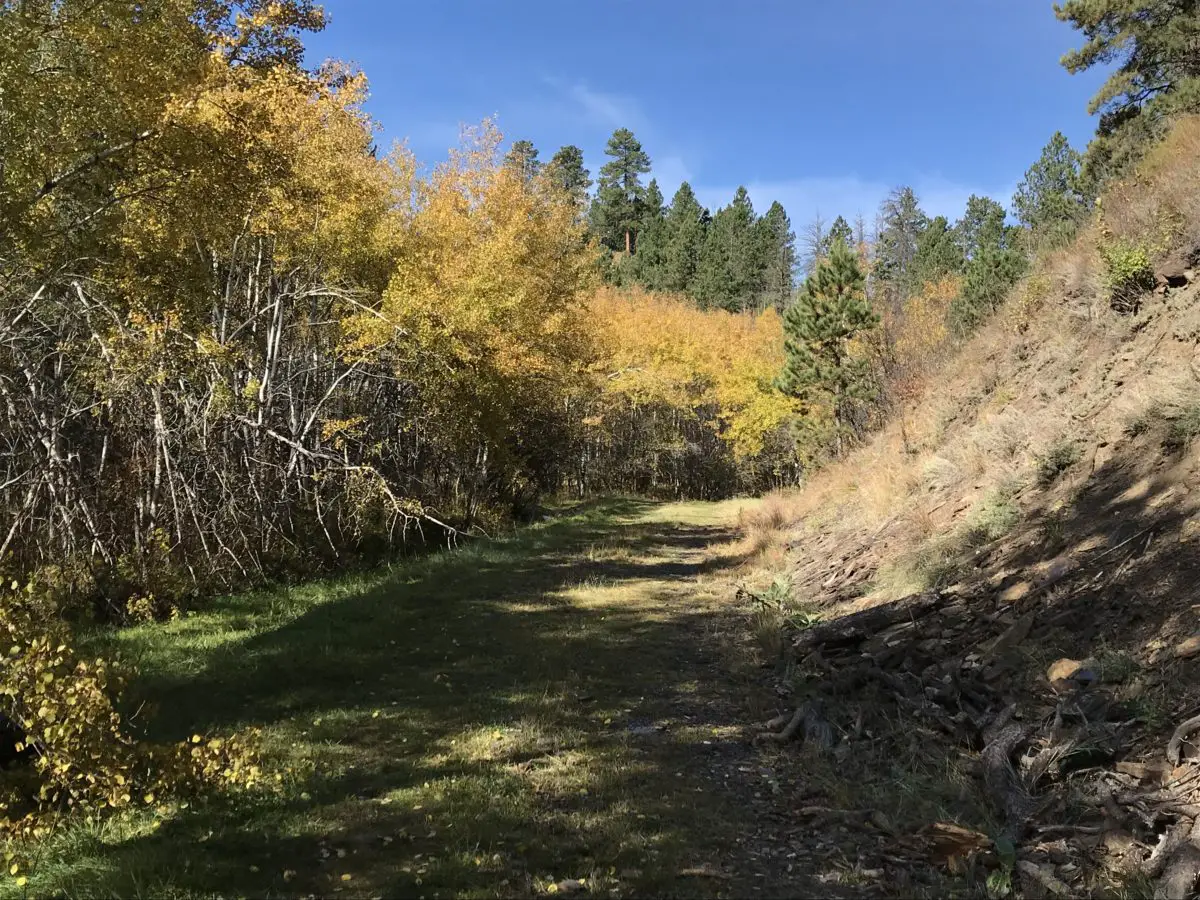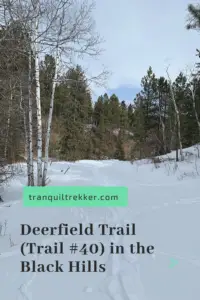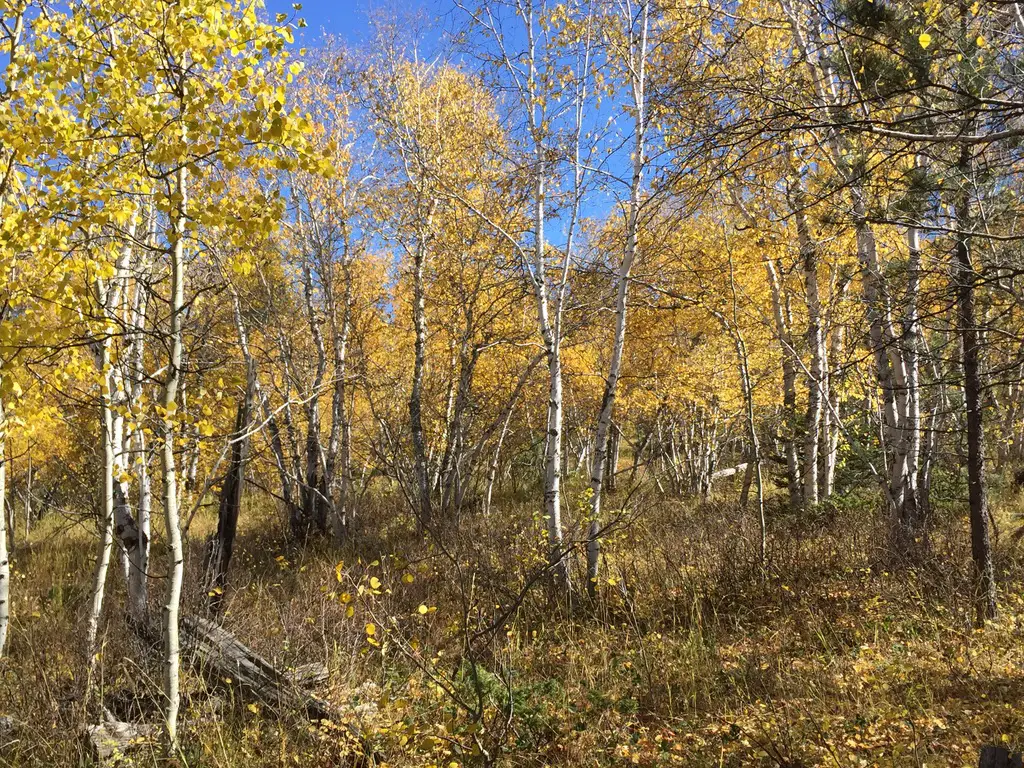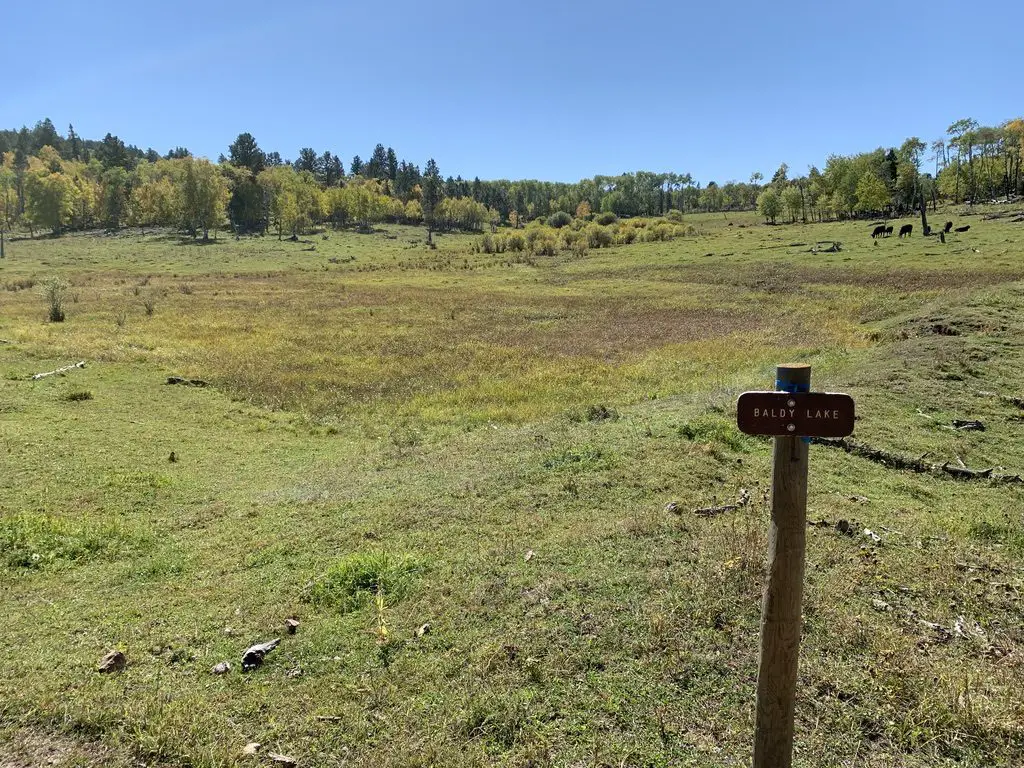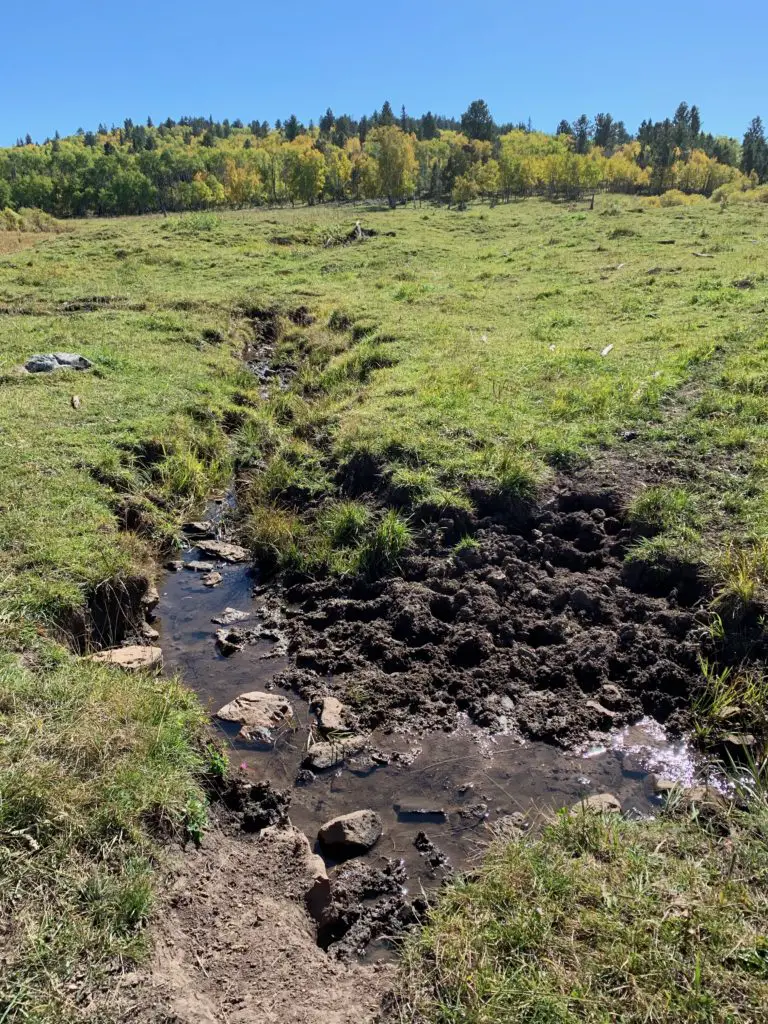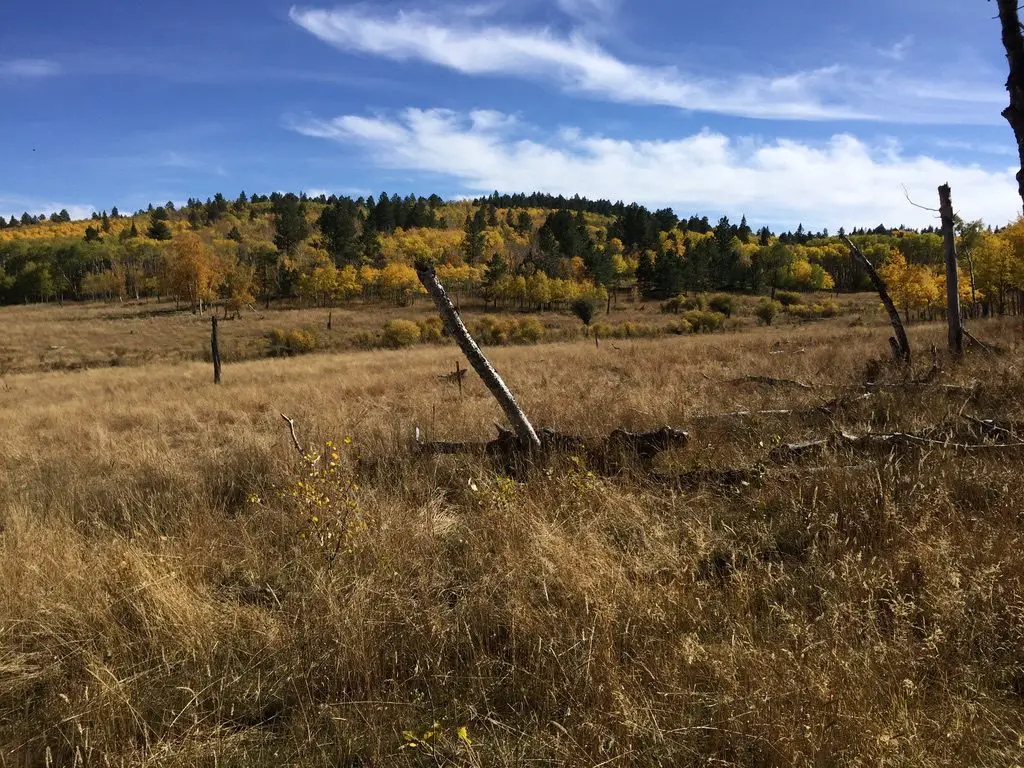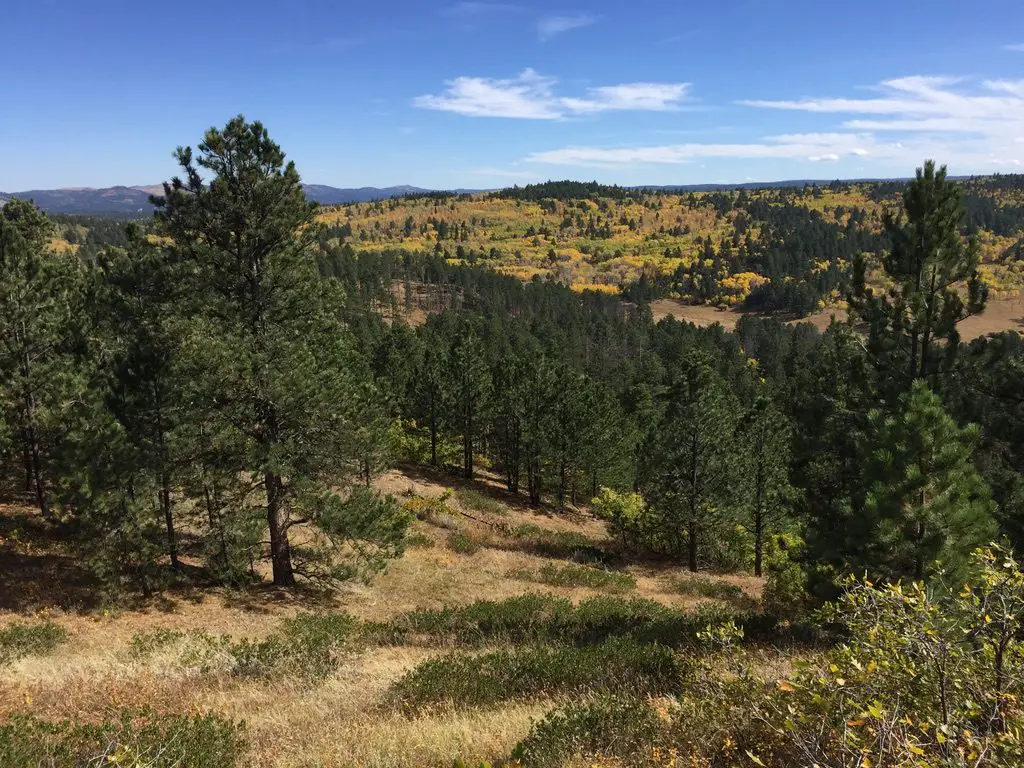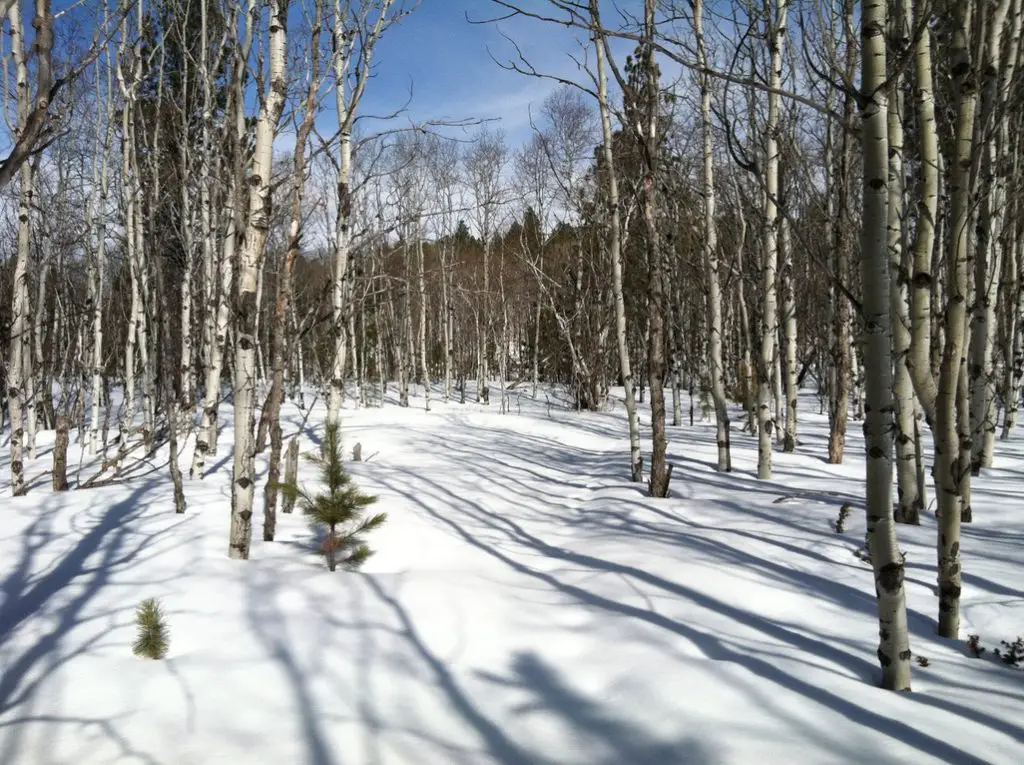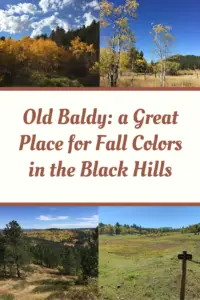At 23 total miles long, the Deerfield Trail (Trail #40) can be accessed from several trailheads throughout the Black Hills. It begins at Deerfield Reservoir (there’s a spur trail that actually circumvents the entire lake), crosses the Mickelson Trail at about the halfway point, and eventually, spans all the way to the Centennial Trail near Pactola Reservoir.
The Deerfield Trail is adorable! It traverses canyons, meadows, valleys, and ridges. Sites that housed old mining camps (and some that are still operating) and the occasional remnants of an abandoned homestead dot its course. This includes one squatter’s paradise that was built directly into the rock! Tailings from old mining sites, remnants of ramshackle cabins, and numerous stream crossings–often with charming, simple, log bridges–are scattered throughout the trail’s length.


Things to See on the Deerfield Trail
 The Deerfield Trail runs through several canyons that are similar to those found on Rimrock Trail, that traverses the rim of Spearfish Canyon and others that you see on the Little Elk Creek Trail, near Sturgis. The canyons are especially gorgeous in fall as the never-ending green of the spruces, that blanket the canyon walls, contrasts with the yellow and orange of the aspens and red of the plants that frame the creek.
The Deerfield Trail runs through several canyons that are similar to those found on Rimrock Trail, that traverses the rim of Spearfish Canyon and others that you see on the Little Elk Creek Trail, near Sturgis. The canyons are especially gorgeous in fall as the never-ending green of the spruces, that blanket the canyon walls, contrasts with the yellow and orange of the aspens and red of the plants that frame the creek.
Several sections of this trail run along ridges that are reminiscent of those found in the Eagle Cliff and Big Hill areas in the Northern Hills.
This is another trail system that crosses multiple ecosystems, similar to the trails that traverse the rim of Spearfish Canyon. The canyon sections are lush and green, while the ridge sections are comprised more of a drier, arid prairie.
Treks on the Deerfield Trail can even include a variety of weather depending on which side of the mountain you find yourself. You may start off your hike in sunny, blue skies, veiled with wisps of cirrus clouds. By the time you reach the ridgeline, a cold breeze can be blowing darker, heavier clouds in. Then, after a quick lunch, you can retrace your steps to the other side of the hill and return to a warmer, sunlit forest.

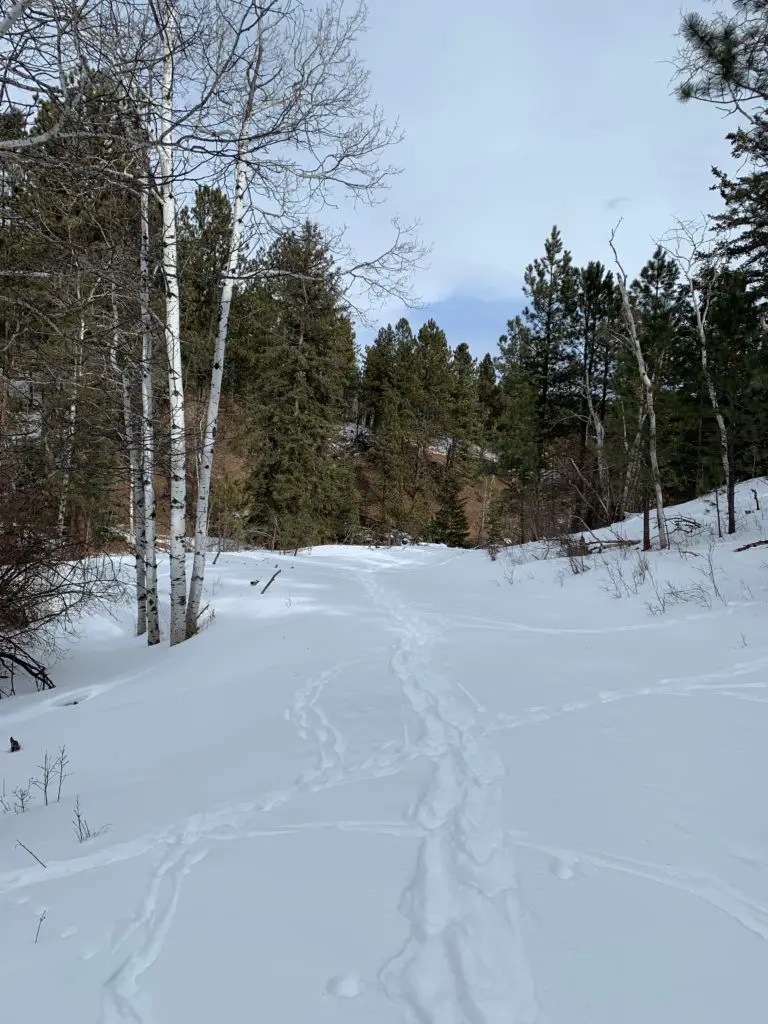
Things To Do on the Deerfield Trail
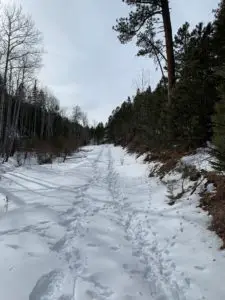 The Deerfield Trail is open year-round, for various activities, including horseback riding, hiking, mountain biking, and snowshoeing/cross-country skiing, depending on the time of year.
The Deerfield Trail is open year-round, for various activities, including horseback riding, hiking, mountain biking, and snowshoeing/cross-country skiing, depending on the time of year.
Large portions of the route follow old logging and forest roads that are wide and well-graded, so travel is often smooth. (Some of these are still in use so keep your ears and eyes open as you may have company on the trail).
While the entire route could be completed in one attempt with an overnight trip–or a VERY long day trip (if you had a car at each end)–it is usually conquered in sections (as the Trekkers are attempting). It should also be noted that some of the trailheads may be difficult–or impossible–to reach in the snowy months (at least with a typical, road-worthy vehicle).
The elevation for this trail is moderate compared to many of the other, longer ones in the Black Hills. While some sections will get your heart pumping, many consist of scenic, tranquil afternoon hikes in the woods.
One of the best features of this hike, for me, is its solitude. Some portions are more heavily traveled than others–namely the canyon sections–but often you’ll find you have the trail to yourself (especially in the colder months). It’s not unusual for the only evidence of others having used the route to be the deer, elk, coyote, and often, mountain lion tracks–usually following the deer tracks! 😳–that remain in the mud or snow. Don’t be surprised if you see the flags of some white-tail deer tails flying high as they dash out of your way as you traverse the trail!

Below is a picture from the same area on the trail, but at different seasons (fall and winter).
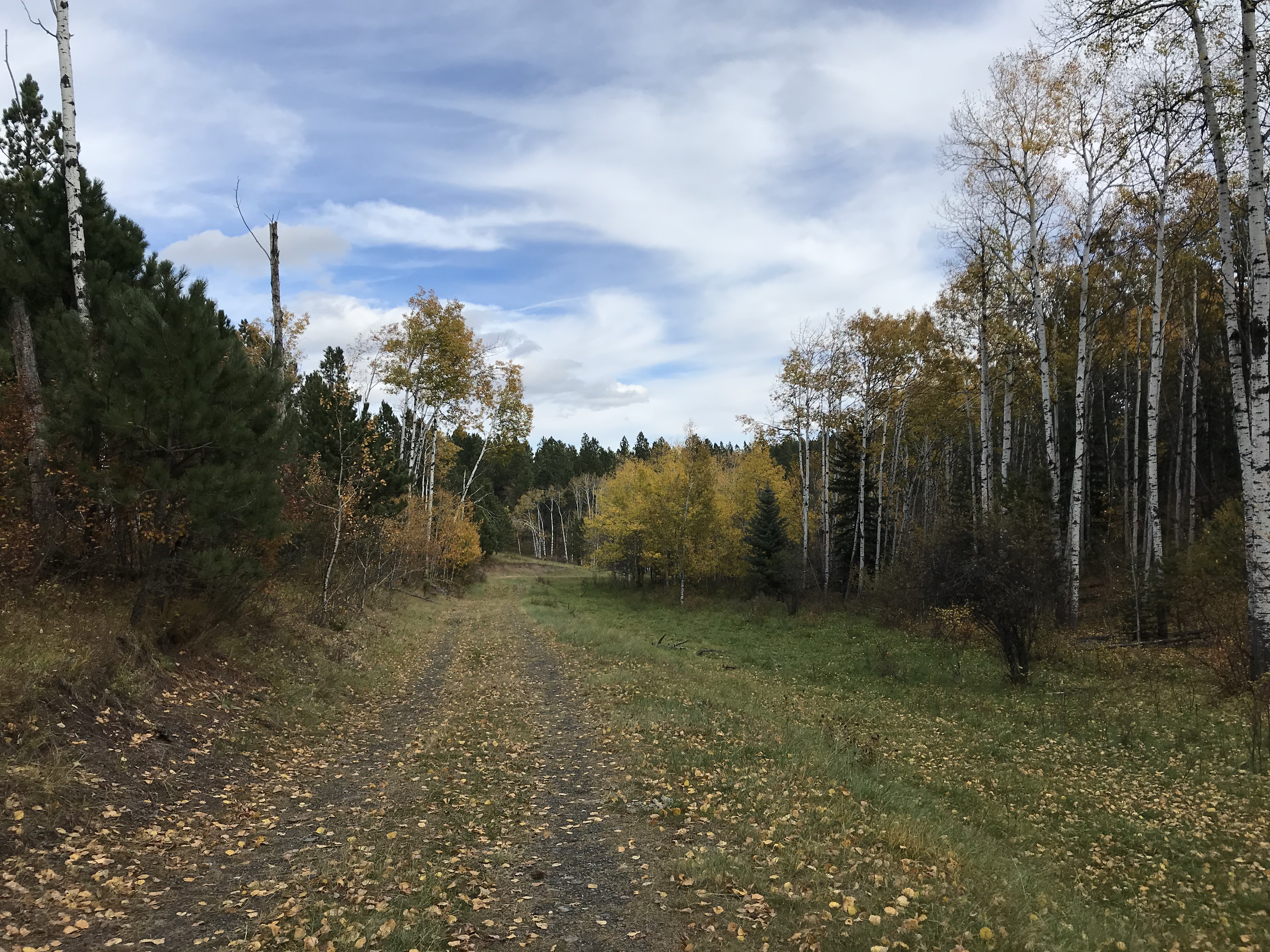
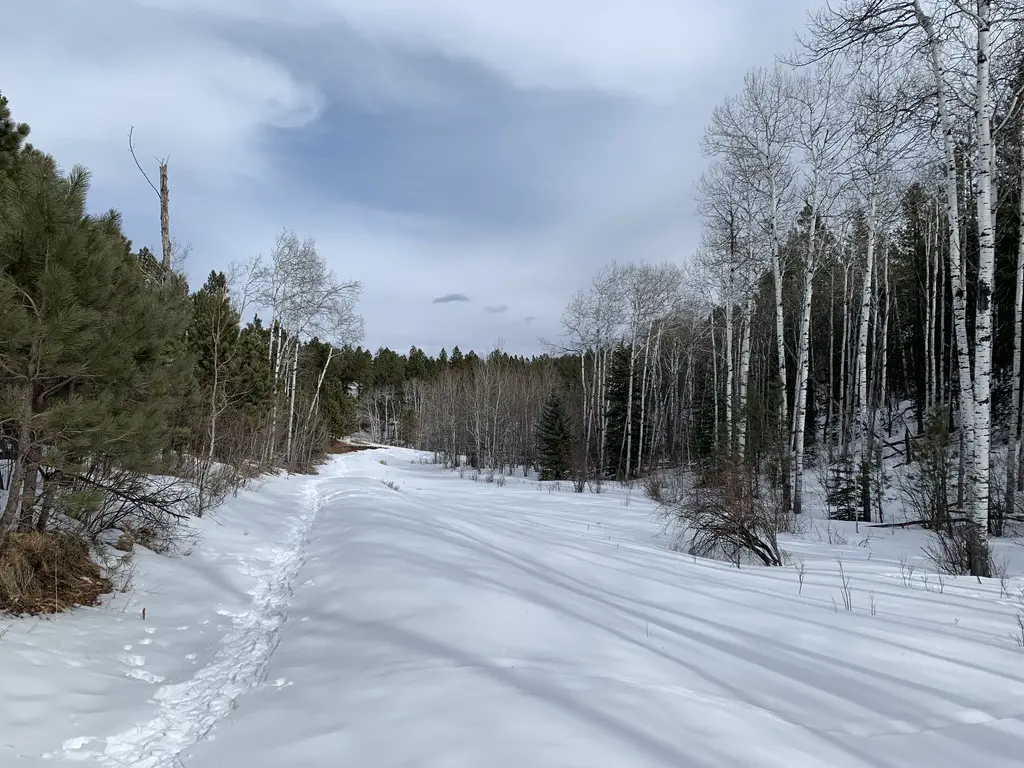
A few more pictures from this scenic trail!
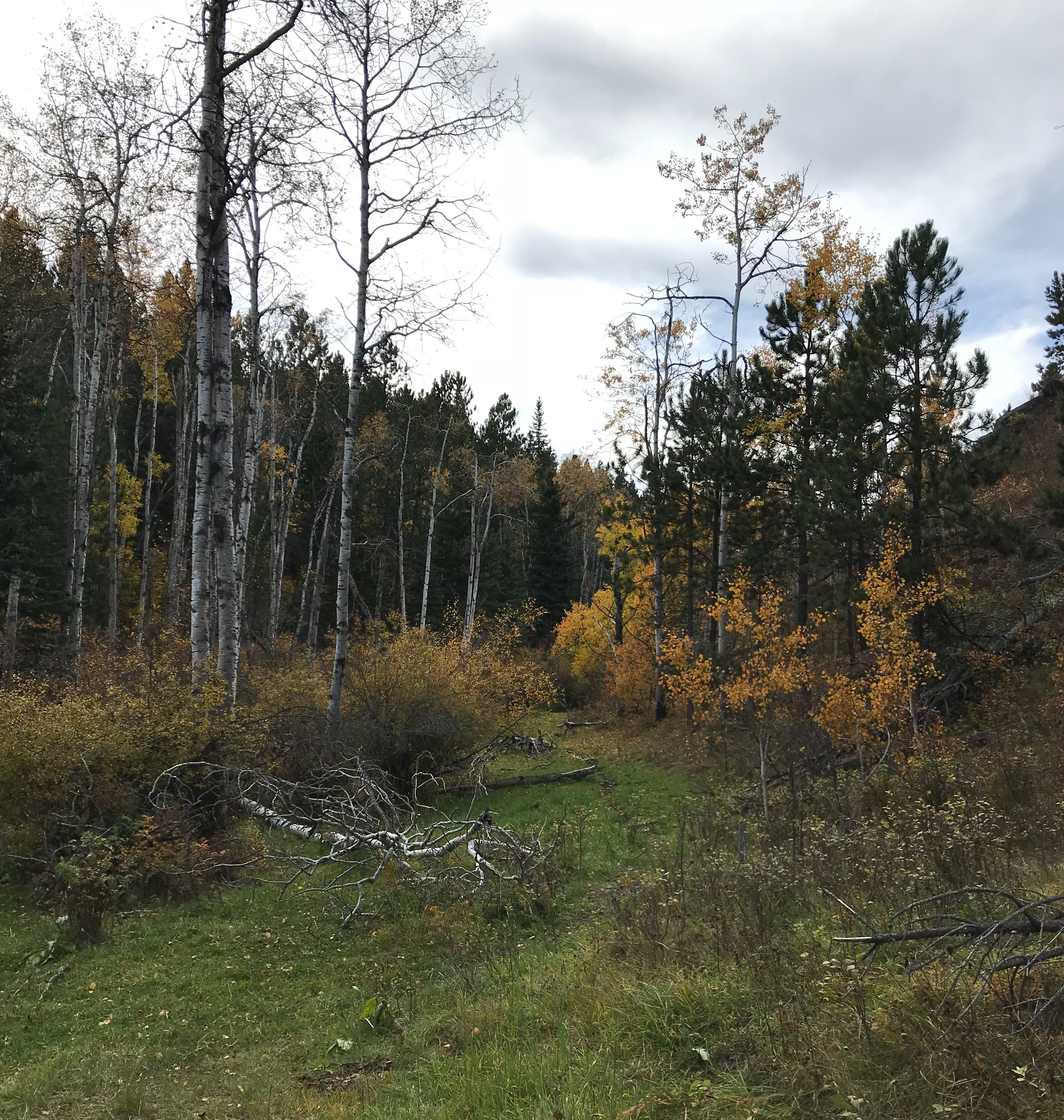
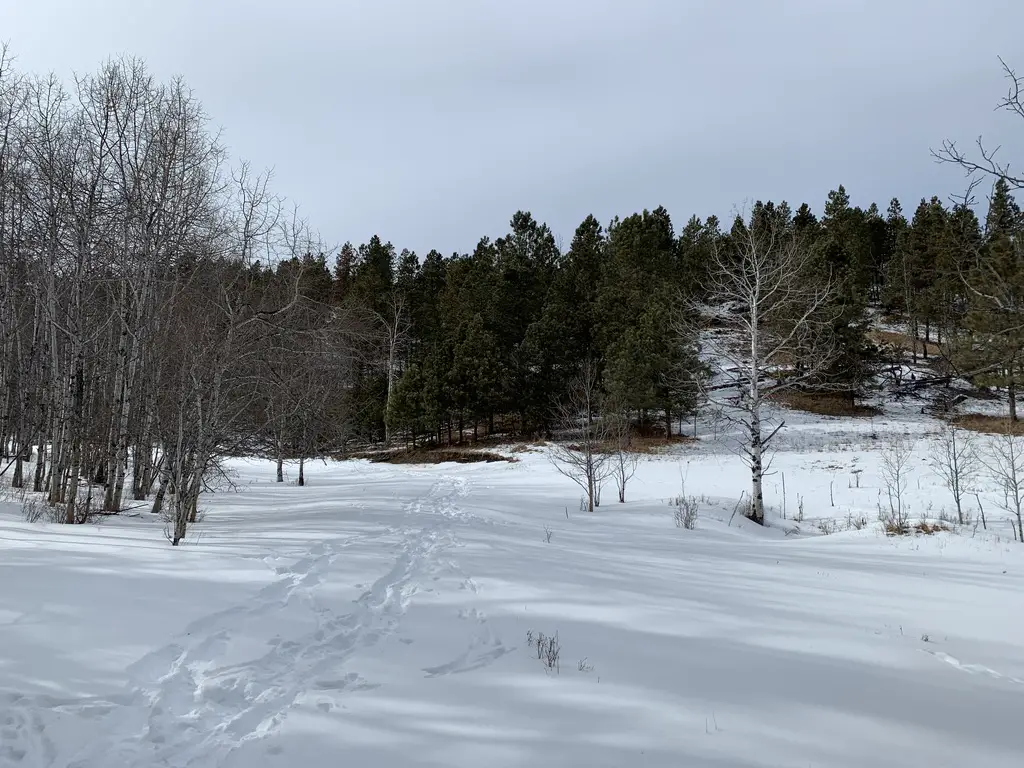
If you’re looking for a peaceful, casual hike through some beautiful countryside, consider giving the Deerfield Trail a try!
Have you hiked portions of this trail? What were your favorite parts? Tell me about them in the comments!
Did you enjoy this post? Pin it!
Like what you read here today? Please feel free to leave a comment, like or share this post! Add your email at the bottom of the page, or the sidebar to the right, to be notified when a new post is published. By signing up for the email list, you will also receive a free copy of the Tranquil Trekker’s Top 10 Tips of Trekking Do’s and Don’ts!
You can also follow the blog on social media by clicking the links below!
